In our New Testament gospels there are three women named Mary who are closely associated with Jesus:
- His mother, who raised him and a large family of four other boys and at least two girls (Mark 6:3)
- Mary of Bethany, the sister of Martha and Lazarus (Luke 10:38-42; John 11:1-5; 12:1-3; Mark 11:11-12)
- Mary Magdalene (Mark 15:40, 47; 16:1; Luke 8:1-3; 24:10; Matthew 17:56; 28:1-10; John 20:1-18)
Tradition has it that the names of his two sisters were Mary and Salome (Mark 6:3; 16:1; Epiphanius, Pan.78.8,1 & 78.9, 6), so it is likely that there was a fourth Mary in Jesus’ life, namely his sister. In terms of keeping all the Marys straight there is a collection of papers titled Which Mary? The Marys of Early Christian Tradition, edited by F. Stanley Jones (Atlanta: Society of Biblical Literature: 2002) that came out of a SBL Symposium session at the annual meeting of the society in 2000. It is unfortunately out of print, but available in good research libraries and from used book sellers via Amazon. This work is particularly important for the current discussion of the Talpiot tomb ossuaries as it deals with the matter of “Naming the Marys,” that is, how do the various names used for Mary in Coptic and Greek help us to distinguish just which Mary is included in a host of post-canonical N.T. texts. There is considerable confusion and overlap between the role of Mary, mother of Jesus, and Mary Magdalene, his most prominent female follower and apostle. Indeed, some scholars have argued for a conflated tradition in which a kind of “universal Mary” is developing. Whether the Talpiot tomb, with its “two Marys” will shed any light on this discussion remains an open question but it is not often that material evidence of this sort can be combined with textual materials in advancing our understanding of a marginalized and forgotten aspect of the emerging Christian faith.
Mary, is the English form of the Hebrew Miriam (מרים)the name of the sister of Moses and Aaron (Exodus 15:20). It comes down to us in several forms in Hebrew, Aramaic, and Greek: Mariam, Maria, Mariame, and the rare diminutive form–Mariamne; but in English the name is commonly rendered simply “Mary.” If one tabulates all the references to Jewish names of women from archaeological and literary sources from Palestine in late antiquity (Tal Ilan’s Lexicon), the name Mary occurs 70 times of the 320 total examples of female names. That means we can estimate that approximately 21% of Jewish women were named Mary. This popularity might have to do with Miriam the sister of Moses, but it also has been traced to the women in the Hashmonean or Maccabean line who favored this name. It seems that names of the Maccabees, both male and female, were extraordinarily popular in late 2nd Temple Palestinian Judaism, perhaps for patriotic reasons.
Oddly, strangely, mysteriously, Mary Magdalene shows up “out of the blue” in Mark, our earliest gospel, at the crucifixion of Jesus. She is identified as one of the women who followed Jesus from Galilee. Significantly, she is mentioned first when these Galilean women are named, as if she might be considered to have priority (Mark 15:47; Matthew 27:56; Luke 24:10). She is subsequently the first to visit the tomb of Jesus and seems to have taken charge in his rites of burial, but after that she disappears from our New Testament records. Paul never mentions her, nor does the book of Acts, nor any of the other later New Testament writings. Her “disappearance” serves to make her all the more mysterious, particularly in the light of traditions outside our New Testament gospels. For in depth-reading on what we know of her see my series “There’s Something About Mary” and “Mary Magdalene as First Witness Among the Apostles.”
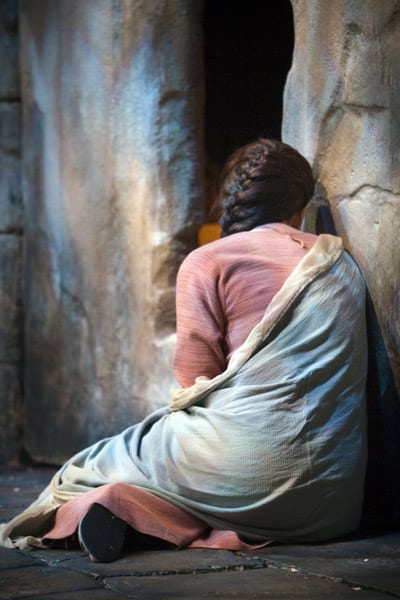
Three of these Marys are singled out in early Christian traditions as having “always walked with him.” As the Gospel of Philip puts it, “His sister and his mother and his companion were each a Mary” (59, 12). This third Mary, identified here as acompanion, is clearly Mary Magdalene.
As far as these Marys in the life of Jesus, we know precious little about any of them, and whether historian or devotee of Jesus, we wish we knew much more. Mary Magdalene, first witness to Jesus’ resurrection according to Matthew and John, is perhaps the most intriguing, both to scholars and the public alike. A Google search for “Mary Magdalene” yields millions of “hits” and Amazon registers thousands of books with her name in the titles. An Amazon search registers over 15,000 books that are in some way related to her. The Wikipedia entry, Mary Magdalene, provides a good overview to what might be called the “Mary Magdalene” craze. Dan Brown’s novel, and the subsequent film, The Davinci Code has now spread a version of the popular fascination with Mary Magdalene around the globe in every marketable language. I have even heard the term “Mag-Heads” referring to groups of women who are Mary Magdalene aficionados. No one could possibly keep up with the popular phenomenon and even getting a hold on the more academic and scholarly treatments of Mary Magdalene is a daunting task. So where does one even begin?
For serious students of early Christianity I recommend beginning with Jane Schaberg’s rich and wonderful book, The Resurrection of Mary Magdalene: Legends, Aprocrypha, and the Christian Testament(New York: Continuum, 2002). I have mentioned before on this blog Schaberg’s pioneering book, The Illegitimacy of Jesus, now republished in an expanded twentieth anniversary edition (Sheffield Phoenix Press, 2006). In working through my own studies of issues related to the virgin birth/paternity of Jesus for The Jesus Dynasty,I had found Schaberg’s sharp mind, breadth of learning, and creative courage immensely stimulating and informative. Jane Schaberg died of cancer earlier in 2012. She is sorely missed, but her wonderful contributions to our field live on through her writings.
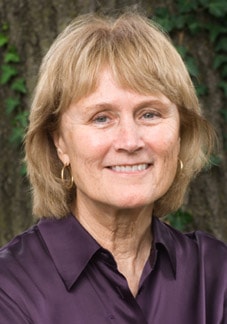
The Resurrection of Mary Magdalene is unquestionably one of the most important academic studies of Mary Magdalene in our field. It is wonderfully written, thick, and rich in its sources and scholarship, and remarkably insightful. Schaberg writes in a personal, poetic, discursive style without losing the sharply critical and analytical skills that are essential in working with a subject of such complexity. Somehow she pulls it off and the result is an elegant book with a powerful impact and message.
In The Jesus Dynasty my intent, beyond presenting Jesus within his apocalyptic world, was to rehabilitate the historical memory of three miscast and marginalized characters that were central to his life, namely that of, his mother Mary, John the baptizer, and his brother James. Mary, the Jewish mother of seven, has been transformed into an hardly-human divine mediator; John was swept off the center stage as a mere precursor and “forerunner” of Jesus, the main act, and James was simply lost and forgotten–almost as if he had never existed.
I gave very little attention to Mary Magdalene because I had not devoted enough time to the sources to feel settled enough on the main issues involved in the historical sources. Schaberg, along with the concerted voices of many of her academic colleagues, that Mary Magdalene, as much as John the Baptist or James, has been forgotten, maligned, marginalized, erased, and essentially “buried,” when it comes to the dominant Christian story, reflected in the New Testament and other more “orthodox” early Christian sources.
Schaberg’s treatment surveys the material/archaeological evidence on the city of Migdal or Magdala, home of Mary Magdalene. Just as Sepphoris, the urban capital of Galilee, gives us a wider context for Jesus growing up in Nazareth, just three miles to the southeast, Migdal provides an interesting backdrop for Mary Magdalene. In the Talmud, Magdala is called by its Aramaic name, Migdal Nunaiya, “Tower of Fish,” as Magdala was famous for its fish processing on the shores of the Sea of Galilee (Pesach46a). Josephus and Greek writers call the city by the name Tarichaea, which means the city of “salted fish.”
Migdal, according to our sources, had a large aqueduct system, a theater, hippodrome, and a market. Josephus describes it in some detail and made the city his headquarters when he became commander of the Galilean revolt. It was culturally and commercially diverse, opulent, and “wild.” Meyers and Strange concluded that the city was more “Romanized” than Capernaum or Chorazin, and thus closer to Sepphoris, Tiberius, and Beth Shean as a Roman polis. Luke passes on a tradition that Mary Magdalene, along with several other Galilean women who followed Jesus, was a person of financial means, who provided funding for his movement (Luke 8:1-3). Recent archaeological excavations at Midgal have uncovered some spectacular finds, including a 1st century synagogue, see the Israel Antiquities report here.
Schaberg skillfully takes one through the complex of so-called “gnostic” and “apocryphal” texts on Mary Magdalene. She offers a critical profile that includes elements such as: Mary as prominent among the followers of Jesus; a leader both in harmony and in conflict with certain male disciples; a bold visionary respected for her superior understanding; and an intimate companion of Jesus. These materials are sometimes dismissed and denigrated as “gnostic,” and thus “heretical” or “marginal,” in contrast to what is considered “mainstream” and “orthodox.” Such anachronistic boundaries and definitions are being increasingly called into question by historians of early Christianity who are seeking to construct a much wider and more diverse picture of the various “streams” and “trajectories” of tradition that developed within the early Jesus movement.
To assume that the standard portrait of Mark (followed by Matt & Luke) and John, or the singular visions of Paul, are somehow more “historical” and thus “authentic,” is to ignore the theologically tendentious nature of all such literature. What is left out is often as weighty as what is said. What we have are competing visions, sometimes in tension, and other times overlapping and complementary. All of our texts and sources need to be laid out and viewed together with a critical eye as to the parties, pieties, and politics involved in each. As Schaberg puts it, “I used to think of the apocryphal texts as a branching out of the canonical tree; I see now that both canonical and apocryphal go down to the roots; that their biology is interactive, radically symbiotic” (p. 9).
One of the most important texts for recovering alternative traditions regarding the place, position, and influence of Mary Magdalene is the Coptic Gospel of Mary that surfaced in 1896 in Cairo and was purchased by Carl Reinhardt. Subsequently additional Greek fragments of this precious document turned up. It was not until 1955 that the first printed edition of the text actually appeared with a German translation. It is not surprising that few have read or heard of this extraordinary document. In this single text all the major elements that Schaberg traces in a dozen other sources are present. Mary Magdalene is clearly functioning as teacher and leader among the male apostles and Peter and Andrew, jealous of her spiritual intimacy with Jesus and her advanced understanding of his message, challenge her position. But even so, Peter admits that “the Savior loved you more than any other woman.” In the end it is Levi (who is “Matthew,” see Mark 2:13-14; Matthew 9:9; 10:3) who comes to the defense of Mary. He sharply rebukes Peter and urges the disciples to listen to this woman whom Jesus knew completely and loved devotedly.
Having surveyed the so-called apocryphal/gnostic traditions on Mary Magdalene, Schaberg devotes two comprehensive chapters to an evaluation of the textual evidence for Mary Magdalene in the New Testament gospels. This is one of the richest sections of her book. She bases her historical reconstruction, her “house of cards,” as she calls it, upon a thoroughly transparent use of historical-critical methods, in analytical dialog with contemporary scholarship. In my view she presents a compelling case that the presence of Mary Magadalene and the other women at Jesus’ crucifixion, and Mary Magdalene’s discovery of an empty tomb, are historically reliable traditions.
In a final chapter titled “Mary Magdalene as Successor to Jesus” Schaberg explores the implications of this historical reconstruction. She argues that the empty tomb tradition, and particularly the unique and highly individualized story in John 20:1-18, where Mary encounters Jesus as he ascends to heaven, are ancient and primary. Schaberg identifies close parallels with the Elijah/Elisha story in 2 Kings 2, with its motif of prophetic succession. Mary addresses Jesus in Aramaic as “Rabbouni,” which is a diminutive form of endearment, “my dear Rabbi” or “my dear master.” And Jesus calls her by name, but using the Aramaic “Mariam,” rather than Maria, which is used for her in John’s narrative (19:25; 20:1, 11). There is a sense then in which Mary Magdalene might be called a “first founder” (my words not hers) of Christianity. It is this fragmentary but primitive tradition, suppressed and erased in Paul’s account (1 Corinthians 15), as well as in the master narratives produced by the circles that gave us our canonical gospels, that survives in the later apocryphal/gnostic traditions.
The Talpiot tomb with the ossuary inscribed Mariamene (“and” or “known as”) Mara has drawn more attention and sparked more controversy than any other topic related to this tomb. If it is a tomb holding the remains of Jesus and his intimate family, the latest DNA tests indicates that Mariamene is neither mother or sister of the Yeshua in the tomb–leaving one to speculate as to whether she might possibly be that “third Mary,” namely Mary Magdalene. The ossuary is ornate and the inscription written in Greek, perhaps indicating a cosmopolitan woman of means. This rare form of the name Mary–Mariamene, has a diminutive ending of endearment. This precise form is only used two other times in all of our extant Greek texts–both referring to Mary Magdalene. Having read Schaberg’s study, the designation “Mara” as a term of honor and respect, not necessarily as a title, rings true with what I think we can say about the “historical” Mary Magdalene. It is also worth noting, just as an echo of the literary tradition in the Gospel of Mary that Mary receives the support of Matthew or Levi, that the the Talpiot tomb has a “Matthew” resting beside her.
A Further Bibliographical Note: Jane Schaberg also wrote a more popular version of a book on Mary Magdalene with Melanie Johnson-Debaufre titled Mary Magdlene Understood (Continuum International, 2006). Some readers might want to begin with this one but I urge everyone to also work through the major book as well. Schaberg spent about ten years writing The Resurrection of Mary Magdaleneand. It is truly a “masterpiece” (strike that–a “mistresspiece“) of well crafted research and academic deliberation.
For further academic reading on Mary Magdalene I also recommend Karen L. King, The Gospel of Mary of Magdala: Jesus and the First Woman Apostle(Santa Rose, CA: Polebridge Press, 2003) and Ann Graham Brock, Mary Madalene, The First Apostle: The Struggle for Authority (Boston: Harvard University Press, 2003). These are exceedingly important studies done by solidly academic scholars. Karen King is a chaired professor at Harvard Divinity School and has helped pioneer a renaissance of scholarly and academic focus on Mary Magdalene. Her book is built around an early 2nd century text titled Gospel of Mary that was discovered in a Coptic translation in the late 19th century with several additional Greek fragments in the 20th century. King offers a detailed analysis of where this text belongs in the history of the emerging Jesus tradition that solidifies in our canonical gospels and Paul. She also offers a reconstructed view of the important role of Mary Magdalene in the early Jesus tradition. Her final chapter, “The History of Christianity,” attempts to sketch out a more diverse and inclusive account of the various parties and strands of Jesus tradition that developed and solidified in the 2nd century CE. Ann Graham Brock has her Ph.D. from Harvard and has written and lectured extensively on Mary Magdalene, with a particular focus on the prominence of Peter in canonical and non-canonical texts and the corresponding diminishing of women’s leadership and apostolicity as “orthodox” Christianity emerges in the 3rd century CE. Her book is a model of careful textual analysis presented in a way that is accessible to the non-spet, inviting the reader into a new world of academic debate on the recovery of lost apostolic traditions.


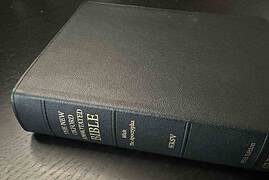
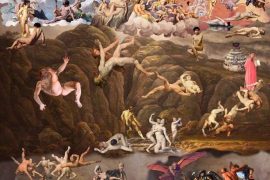
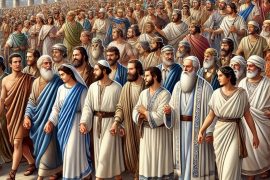


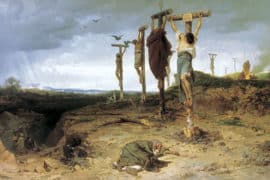

Comments are closed.